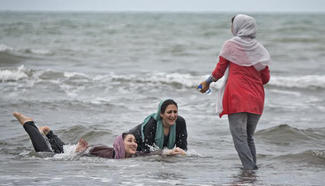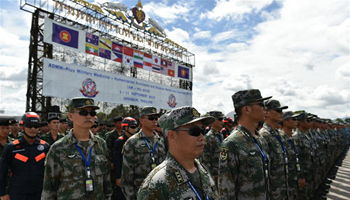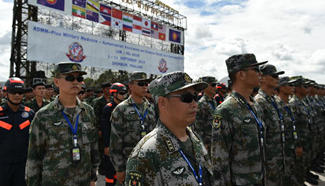WELLINGTON, Sept. 6 (Xinhua) -- An international team of scientists is creating an "earthquake observatory" off the east coast of New Zealand in a bid to better understand and predict violent tremors.
A brace of undersea instruments would be laid off the North Island's East Cape in 2018 to help provide more accurate data on undersea quakes such as the 7.1-magnitude tremor that rocked the country last week, the government's Institute of Geological and Nuclear Sciences (GNS Science) said Tuesday.
During a two-month voyage, the U.S.-based research ship JOIDES Resolution would drill three holes up to 1.5 kilometers deep in the seafloor in different parts of the overlying Australian tectonic plate about 40 km east of the city of Gisborne.
The project by the 26-nation International Ocean Discovery Program would see the ship would insert a range of instruments into the holes to make continuous physical and chemical measurements inside the plate boundary zone.
The instruments would be in place for at least the next decade, and would detect any changes due to earthquakes and other types of tectonic events in the region.
The ship would also collect samples of sediment and rock from the drill holes for scientists to analyze.
A key focus of the project would be to learn how the temperatures and pressures at depth, and the types of rocks being subducted might influence the occurrence of earthquakes and slow-slip events on the Hikurangi subduction zone, where the Pacific plate is being forced under the Australian plate.
GNS Science geophysicist Dr Laura Wallace, who is leading the expedition, said the project's findings would almost certainly have global significance.
"It has the potential to significantly boost the understanding of the mechanics of subduction zone faults and the earthquakes that occur on them," Wallace said.
The project involved at least 50 scientists from several countries.
For the past three years, there had been a "rolling deployment" of seafloor sensors off the Gisborne coast to monitor slow-slip activity and earthquakes on the Hikurangi subduction zone.
On loan from Japanese and U.S. institutions, the instruments sat on the seafloor for 12 months recording offshore quake activity with much greater precision than land-based instruments because of their proximity to the action.
"These seafloor instruments have given us tremendous insights into the workings of this complex plate boundary fault zone, but the information is always retrospective," said Wallace.
"Silent earthquakes," also known as slow-slip events, are similar to an earthquake, but they occur over weeks or months, rather than seconds.










